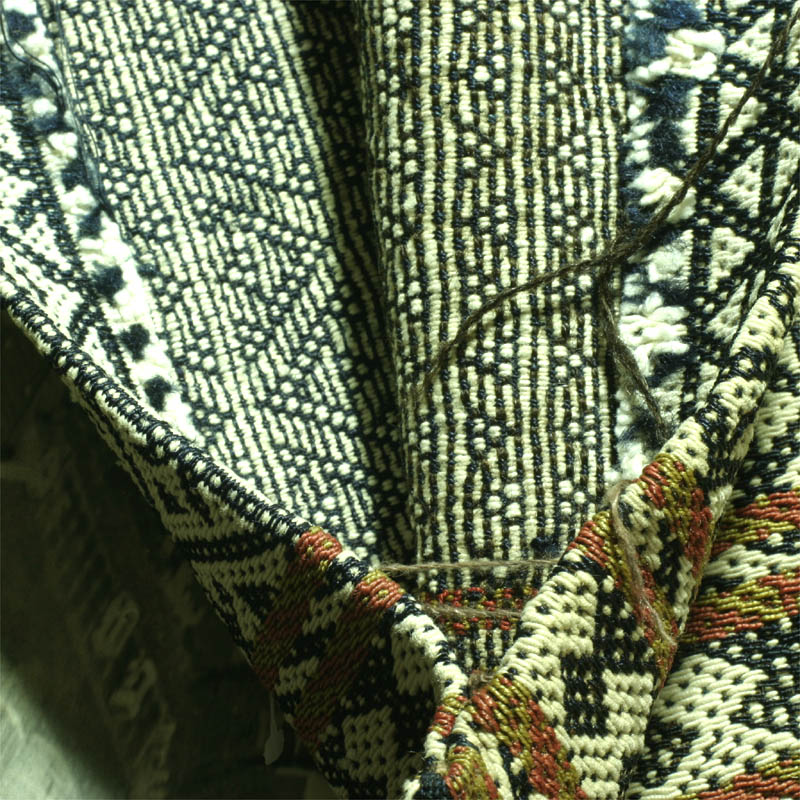This is a rare and flat-woven Qashqa'i bag (khorjin) beautifully executed in a white and dark blue warp-faced complementary warp-pattern weave. The Qashqa'i used to be a nomadic tribe (with many sub-tribes —I don't know to which one this may be attributable) that lived in Southern Persia in the Zagros Mountains of Fars province, with winter pastures at the Persian gulf. Jenny Housego shows a very similar horse blanket in Plate 106 of her book Tribal rugs— this piece even has bands in different colour running down both sides. In our piece, we see two pairs od equal narrow bands, diagonally striped in light green and brick red - a beautiful contrast to the austere blue and white pattern.
As in all warp-faced weaves, there is an imperative for an equal distribution of both colours in the pattern to maintain equal warp tension. The diamond grid with an inset x-shape flanked top and bottom by small triangles not only complies to such equal distribution, the small dots that fill the white diamond in regular intervals never allow for any colour to span more than two wefts, integrating both front and back side very tightly. The result is a very sturdy and flexible weave. Front and back are kept together by a kind of cross-stitch overcast in white red and dark blue which is original.
The back of the khorjin shows a different and simpler pattern: a finer diagonal grid with horizontal bars which shows the same regular dot pattern to ensure no warp spans more than two wefts.
The size of the bag is 21.5in. x 15.3in. (55 x 39 cm). The fine warp-patterned weave (ca. 26 warps horizontal per inch x ca. 22 wefts per inch) alternates the two warp colours which subsitute each other to form the pattern: wool warps in the darkest indigo, and white cotton warps. Both are strongly spun into a very tight drill. The white cotton is somewhat fluffier than the dark-blue wool which lends a very slight embossed character to the weave. Wefts are dark brown wool (probably undyed sheep's wool). For the vertical stripes, warps are brick-red and yellow-green wool. All three colours look based on natural dyes (plus white cotton).
This bag has once been used as a carrier double bag (the other side and the bridge linking both bags is gone). Where they have been cut off, both front and back have been folded inwards by about 1 1/2 inch (visible in one of the photos). This could of course be folded out and would add to the height of the bag but the loose ends (not secured) would become visible.
There is very little visible wear apart fro a small patch and moderate staining (see below) and some wear of the back side near the bottom (see images). This is an incredibly hard-wearing fabric.
The bag has traces of staining, especially an extended yellowish coloration of the near the bottom centre of the back side—the side which will have touched the animal (donkey or horse) carrying it. The front shows a small patch near the bottom; the patch material is of the same type of weave coarsely stitched in with brown wool. this is undoubtedly an old repair once made in a tribal context of use, probably cannibalising a similar bag.




